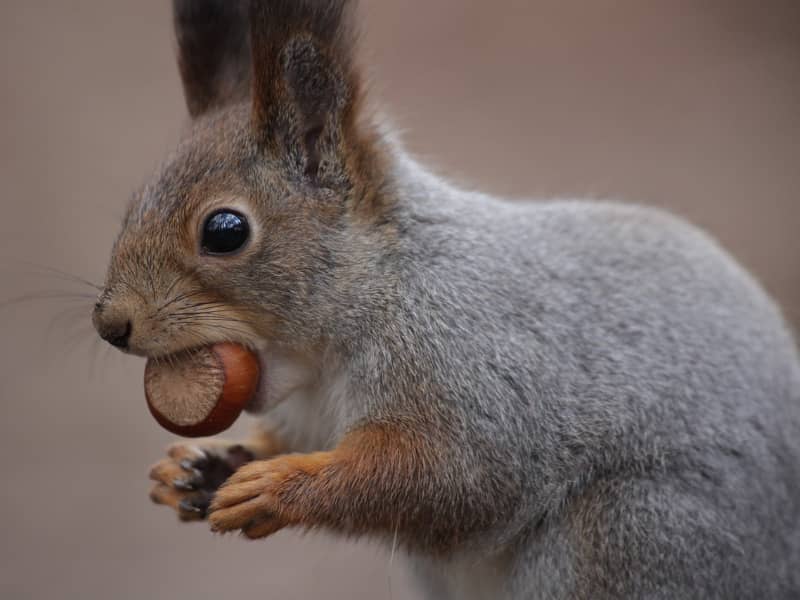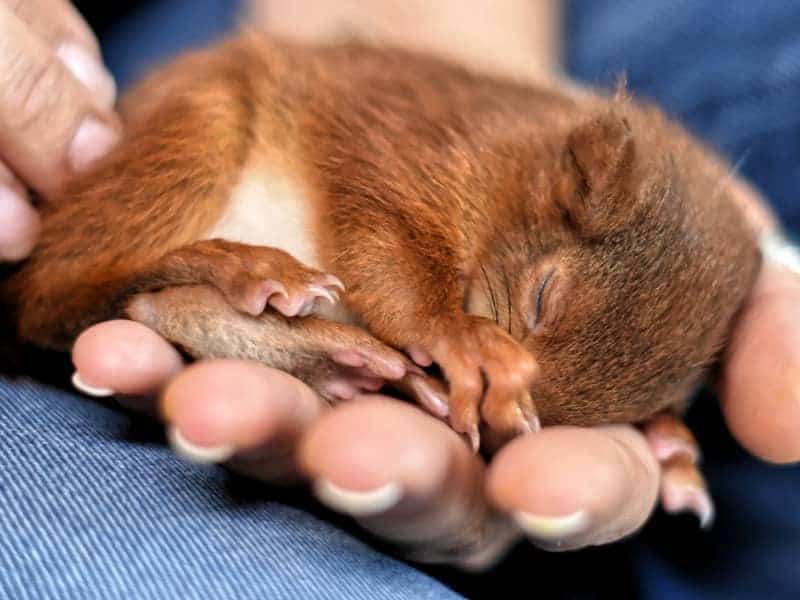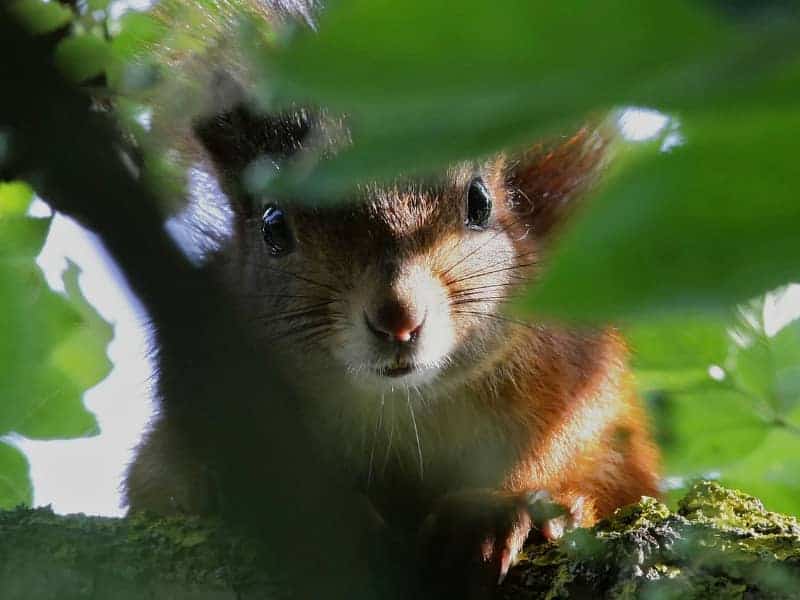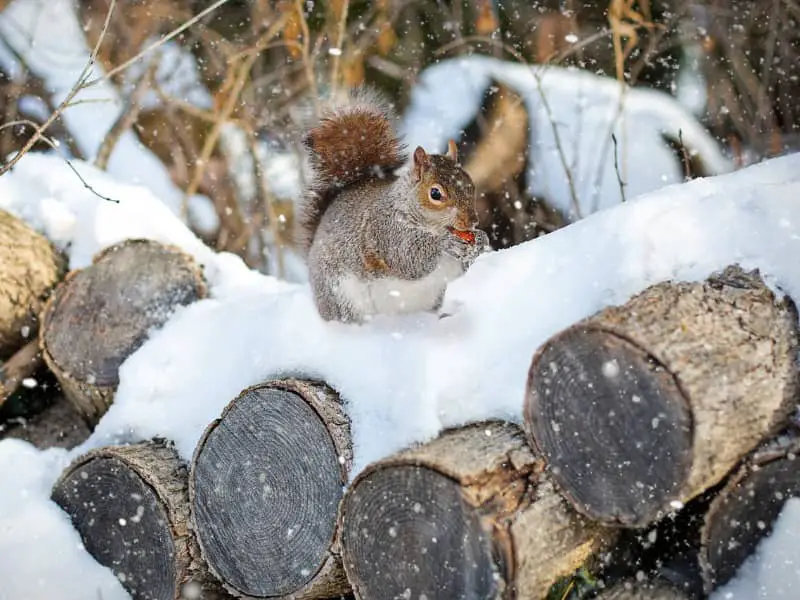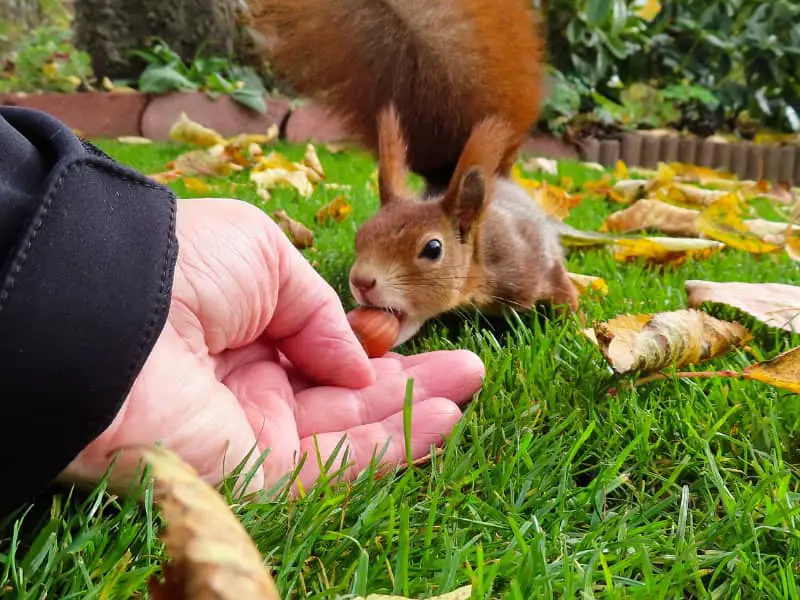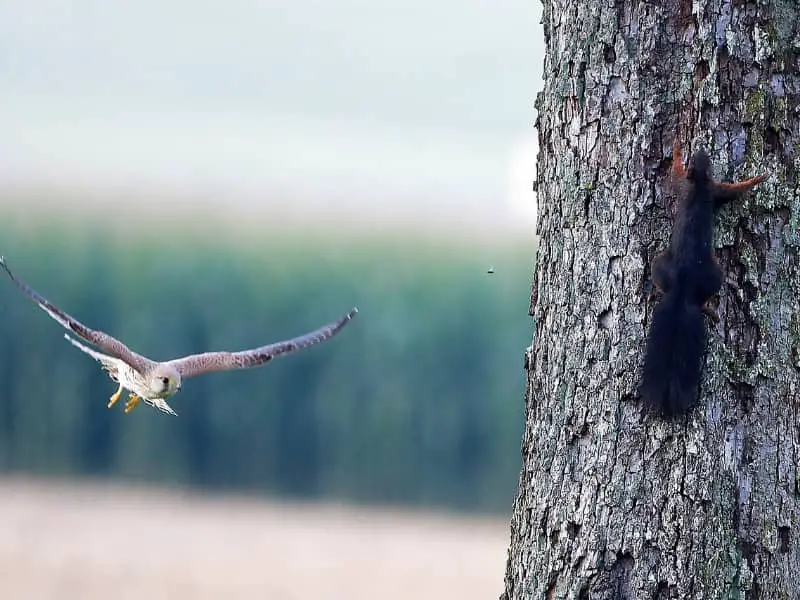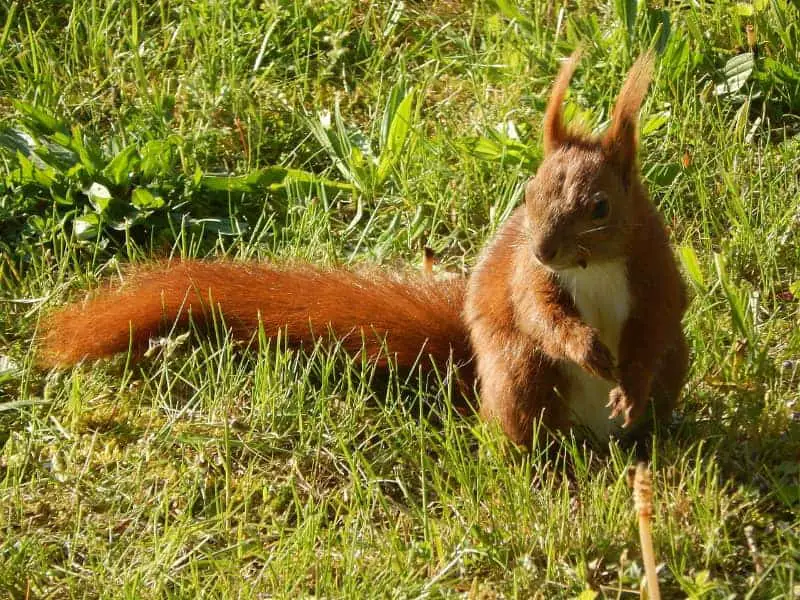
Red squirrels
The red squirrel is also called the Eurasian squirrel (Sciurus vulagaris). It is a rodent of the squirrel family that occurs in Central Europe. To distinguish it from the Caucasian squirrel and the naturalized gray squirrel, it is also called the European squirrel.
Red squirrels - regional designations
Depending on the region, the red squirrel is also called Eichkätzchen, Eicherli (Switzerland), Eichhase (Austria), Baumfuchs (Hesse), Konradchen (Nassau), Eichhalm (Württemberg) or Katteker (Low German).
Red squirrels - the physique
The red squirrel has adapted its physique to its climbing and tree-dwelling lifestyle. On average, it weighs between 200 and 400 g and has a length of about 25 cm. The hairy and bushy tail is about 15 - 20 cm long. The tail serves the animals as a balancing aid and as a rudder. When the animal runs, the tail always sticks up vertically. You can distinguish the different sexes by the size and the fur color.
The red squirrel is a sole walker. This means that it has 4 long and very mobile fingers with long claws on the front paws. The hind legs are quite long and very strong. Due to the long claws, the squirrel has a good grip at all times when climbing.
The teeth of the red squirrel
In each half of the jaw, the red squirrel has one nail tooth, two premolars above and one premolars below, and three molars. There are no canine teeth. In total, the squirrel has 22 teeth.
The size of both the premolars and molars increases from front to back. Thereby, the upper premolar tooth is small and pencil-shaped. It is moved inward and has practically no function.
The fur
Red squirrels have short and dense hair. The woolly hairs of the animals are of different lengths. The ear brush hairs have a length of 3 to 5 cm. The tail hairs are on average 5 to 8 cm long.
The top coat varies from light red to brown-black, with the belly always cleanly defined and white or cream. The winter coat is thicker than the summer coat and often darker in color. In the winter coat, the ear tufts remain reddish brown. In addition, the bare soles of the feet of the animals are hairy in winter.
Twice a year the red squirrel changes its coat, with the hair of the ears and tail changing only once.
The habitat of the red squirrel
You can find red squirrels practically all over Europe including Ireland and Great Britain. The red squirrel can also be found in parts of northern Asia, the People's Republic of China and Korea. Even at altitudes of up to 2000 meters you can find the red squirrel.
The typical habitat is coniferous forests. Only in Europe, the animal is also native to deciduous or mixed forests. It is a cultural successor, so that you often find it in parks or in the home garden.
The way of life
Red squirrels are diurnal. They climb not only on tree trunks, but also up and down rough house facades.
When jumping, the animals can bridge about 4 to 5 meters. Due to their low weight, they also dare to climb very thin branches.
On the ground they move forward with jumps. At the same time they are very slow, so they can easily be attacked by dogs or cats. In many cases, the rodents are also run over by cars.
For sleeping and resting they build a kobel. These are hemispherical structures, usually found in a branch fork. The diameter is 30 - 35 cm with an inner diameter of 15 - 20 cm. On the outside, the hive consists of twigs, needles and leaves. Inside, however, it is softly padded with moss, leaves and grass. Kobels are almost waterproof and provide good thermal protection even in winter. Each hutch has at least two entrances and exits. One of them always points downwards, as the red squirrel always enters the den from below.
On average, the construction of a kobel takes between 3 and 5 days. Per animal 2 to 8 Kobels are built, because the animals often have to move because of parasite infestation or other disturbances.
Red squirrels - the food
It is the red squirrel is an omnivore. Depending on the seasons, the animals eat berries, nuts or seeds. In addition, they also eat buds, bark, flowers, tree sap, grains, mushrooms, fruit, invertebrates, as well as bird eggs and young birds.
Per day, the red squirrel needs 80 - 100 g of food. This is on average the seeds of 100 spruce cones.
Within seconds, the rodent can open hazelnuts and walnuts. They gnaw a hole in the nut with their incisors. If the hole is large enough, the lower incisors are used like a lever to crack the nut. This process is learned and not innate.
Red squirrel predators and parasites
Natural predators include pine martens, eagle owls, goshawks and buzzards. The nimble rodents can easily escape from birds of prey, as they run in circling movements around the tree trunk. In the greatest distress, the squirrel will even let itself fall from the tree without hurting itself. In parks and gardens, the rodents fall prey to domestic cats, their greatest enemy.
The red squirrel is infested by numerous ectoparasites such as the squirrel flea or squirrel louse.
Author

-
Garden animal - A life with nature
Welcome to my animal blog! My name is Dirk and I am happy to take you on my journey through the fascinating world of animals and gardening.
Born 54 years ago, I have had an insatiable curiosity for the animal world around me since childhood. Although I have moved professionally in other industries, my true passion has always been animals and nature. It is remarkable how a small garden has become such an important part of my life.
Many of my fondest memories are associated with the animals that share our home. Whether it's the curious squirrels that scurry across the trees in the morning, the colorful variety of birds that visit our feeders, or the busy bees and butterflies that pollinate our flowers, every moment with them is invaluable to me.
This blog is my contribution to share my experiences, discoveries and insights with like-minded people. Here I will share stories of unforgettable encounters with animals, give tips on gardening and creating wildlife-friendly habitats, and take you on my journeys through nature.
Thank you so much for being here!
Cordial,
Dirk aka garden animal
Last posts
- 27. February 2024PetsVeganes Hundefutter – Grün und Gesund?
- 18. January 2024ChickensOregano für Hühner
- November 27, 2023HamsterDiurnal hamsters
- November 24, 2023HamsterHamster hammock

